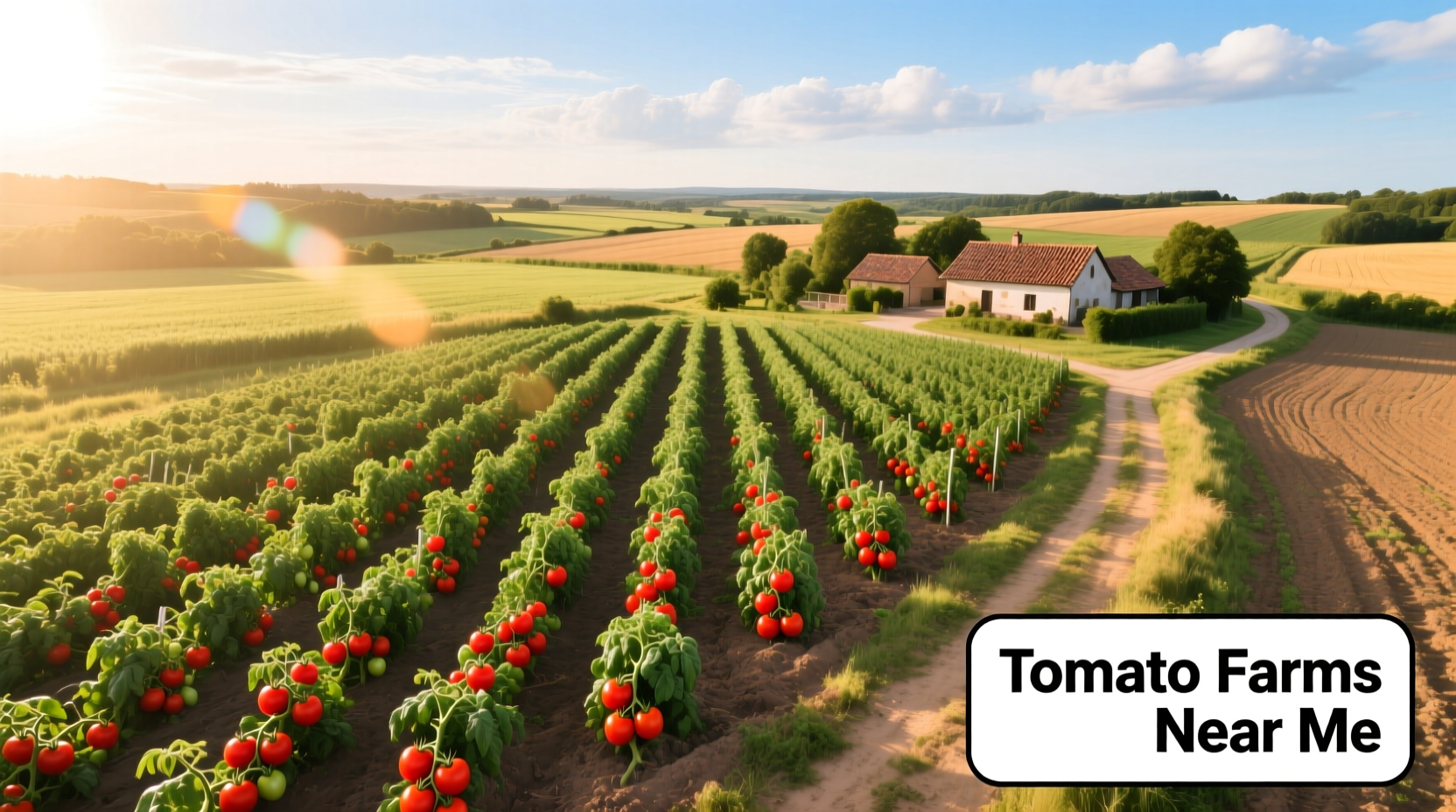Searching for "tomato farms near me" delivers mixed results, but finding genuine local farms doesn't have to be difficult. With the right approach, you can discover farms offering pick-your-own experiences, farm stands, and farmers market vendors—all while supporting sustainable agriculture in your community. This guide provides verified methods to locate tomato farms within your driving distance, complete with seasonal insights and visitor tips.
Why Visit Local Tomato Farms?
Commercial grocery store tomatoes often sacrifice flavor for shelf life, traveling an average of 1,500 miles before reaching shelves according to USDA agricultural data. Local tomato farms provide:
- Freshness: Vines-ripened tomatoes picked at peak flavor
- Nutrition: Higher vitamin content compared to shipped produce
- Community support: Direct economic impact on local farmers
- Educational value: Learning opportunities about sustainable farming
Most importantly, visiting a tomato farm connects you with the source of your food—a valuable experience increasingly sought after by consumers according to the National Farmers Market Association's 2024 survey.
How to Find Authentic Tomato Farms Near You
Generic "tomato farms near me" searches often return commercial farms that don't welcome visitors or outdated listings. Use these proven methods instead:
| Method | Effectiveness | Best For |
|---|---|---|
| State Agricultural Directory | ★★★★★ | Verified working farms |
| Local Farmers Market Association | ★★★★☆ | Farmers selling direct |
| University Extension Services | ★★★★☆ | Seasonal availability |
| Google Maps (with filters) | ★★★☆☆ | Convenience |
Step-by-Step Farm Location Process
1. Check your state's agricultural department website
Most states maintain searchable directories of licensed farms. For example, California's Grown website or Texas Farm Bureau directory provide verified listings with contact information and seasonal availability.
2. Contact your local university extension office
Land-grant universities operate extension services that track local farm activities. Their "Master Gardener" programs often maintain updated tomato harvest calendars specific to your county.
3. Search farmers market associations
Organizations like the USDA Farmers Market Directory list vendors who often operate their own farms. Look for vendors specializing in tomatoes.
Understanding Tomato Seasonality in Your Region
Tomato availability varies dramatically by climate zone. This timeline helps set realistic expectations:
| Region | Peak Season | Duration |
|---|---|---|
| Southern States (FL, TX, CA) | May-August | 12-16 weeks |
| Midwest (IL, OH, MI) | July-September | 8-10 weeks |
| Northeast (NY, PA, MA) | August-October | 6-8 weeks |
| Northwest (WA, OR) | July-September | 10-12 weeks |
According to the USDA's National Agricultural Statistics Service, the average tomato harvest window lasts just 6-12 weeks in most regions—timing your visit correctly is crucial. Many farms only open for pick-your-own during peak production periods, typically the hottest part of summer when tomatoes ripen fastest.

What to Expect During Your Visit
Not all tomato farms operate the same way. Understanding these differences prevents disappointment:
Farm Types and Visitor Expectations
- Pick-Your-Own (PYO) Farms: Require payment per pound, provide containers, and have specific hours. Best for families wanting hands-on experience.
- Farm Stands: Pre-harvested tomatoes available for purchase. Often open daily during season with self-serve payment systems.
- CSA Operations: Community Supported Agriculture programs where you subscribe for regular produce boxes—may include tomato varieties not found commercially.
Important context: Many small farms don't maintain professional websites or social media. The USDA Agricultural Marketing Service reports that 68% of farms under 50 acres rely primarily on word-of-mouth and local advertising.
Maximizing Your Tomato Farm Experience
Follow these expert tips for the best visit:
Before You Go
- Call ahead: Confirm availability—many farms close temporarily after rain
- Check payment methods: Some only accept cash
- Bring containers: Many PYO farms charge for baskets
- Wear appropriate clothing: Long sleeves protect against tomato plant vines
While You're There
- Look for deep red color with slight give when gently squeezed
- Avoid tomatoes with cracks or excessive soft spots
- Ask about varieties—many farms grow heirloom types not available elsewhere
- Inquire about seconds: Imperfect tomatoes often sold at discount for canning
Professional growers recommend visiting early morning when temperatures are cooler and tomatoes are firmest. According to Cornell University's Vegetable Program, tomatoes harvested in morning heat retain better flavor compounds.
Supporting Local Agriculture Beyond Tomato Season
Your connection with local farms shouldn't end when tomato season does:
- Join a CSA for year-round produce
- Attend winter farmers markets (available in 78% of metropolitan areas)
- Preserve your harvest through canning or freezing
- Follow farms on social media for off-season updates
Building relationships with farmers creates opportunities for future visits and potential volunteer opportunities during planting or harvest seasons.











 浙公网安备
33010002000092号
浙公网安备
33010002000092号 浙B2-20120091-4
浙B2-20120091-4